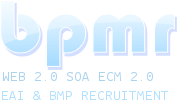Oracle Fusion Middleware:
Oracle Fusion Middleware is a packaged set of Web servers, application servers, content management systems, and development and delivery tools to support complex, distributed business software applications. It includes Java Enterprise Edition 5 (Java EE) compliant environment, and developer tools, to integration services, business intelligence, collaboration, and content management.
Oracle Fusion Middleware offers the following components and solutions.
Development Tools:
A unified SOA development tool and framework. An integrated, but modular, set of development tools to build complete applications, rather than using lots of specialized tools. The design tool includes a single design environment for user interface, business logic, service composition, business process or workflow, business rules, and business intelligence. The design tool enables simplified design and debugging, and to improve productivity. Includes Oracle JDeveloper, Oracle TopLink, Oracle Application Development Framework, and Oracle Eclipse.
User Interaction:
A single, end-user environment that enable access to enterprise applications, business processes, business intelligence and to share information with each other. This end user environment is multichannel allowing it to be accessed from a variety of different clients (mobile clients, desktop clients, Voice-over IP (VOIP) clients). Includes Oracle WebCenter Framework and Oracle Portal.
Business Intelligence:
A suite of business intelligence tools from extract, transform, and load to integrate data into warehouses; query, analysis, and reporting tools for decision support; scorecards to compare how the business is doing against key performance indicators; and alerting to drive notifications to users about problems in the business software. Includes Oracle Business Intelligence Discoverer, Oracle Reports, Oracle Forms Services, and Oracle Portal.
Content Management:
A repository within which to manage documents, digital assets, scanned images and other forms of content; to integrate this content with a company’s enterprise applications, Web sites, and business processes.
SOA:
A means of using existing investments in applications and systems most efficiently to be able to focus more resources and budget on innovation and on delivering new business services. Includes Oracle Service Bus, Oracle Complex Event Processing, Oracle Business Rules, Oracle Business Activity Monitoring, Oracle B2B, Oracle BPEL Process Manager, Oracle Service Registry, Oracle User Messaging Service, Human Workflow, Oracle Mediator.
Application Server:
A standards-based Java EE application server to run the enterprise applications and provide the Web services infrastructure for interoperability.
Integration and Business Process Management (BPM):
A standards-based service bus to connect applications with each other and with legacy systems using messaging; a BPM or workflow engine to connect the application into a business process or workflow; and business activity monitoring and optimize business processes in real time.
Security and Identity Management:
Lower cost of security administration across multiple applications and systems in an enterprise, by centralizing how users are created and provisioned, their identities, and roles and by enabling them to have single sign-on access. Includes Oracle Internet Directory, Oracle Virtual Directory, Oracle Directory Integration Platform, Oracle Identity Federation.
Enterprise Management:
Lower cost of operations and administration by running on a grid architecture with grouping, backup, and other high availability technologies, and integrating with Oracle Enterprise Manager for systems management. Includes Fusion Middleware Control, Oracle WebLogic Server Administration Console, Oracle WebLogic Scripting Tool, Oracle Process Manager and Notification Server, Oracle Enterprise Manager 10g Grid Control.
